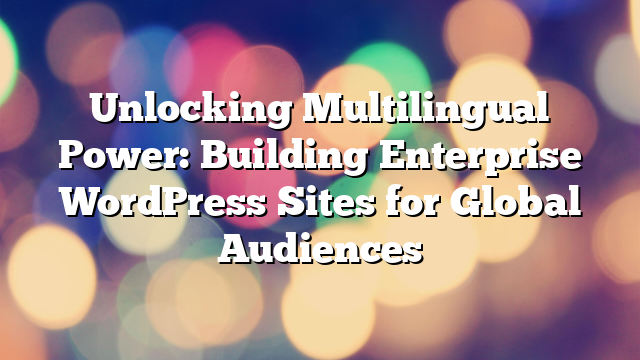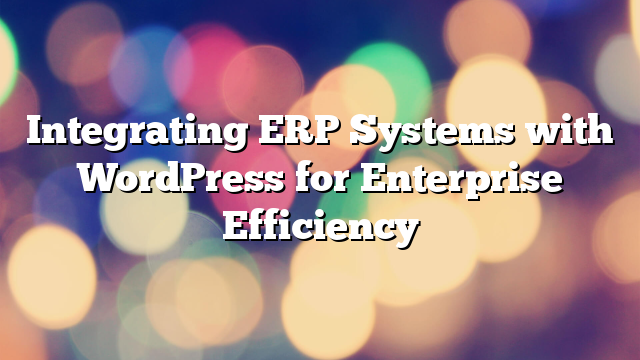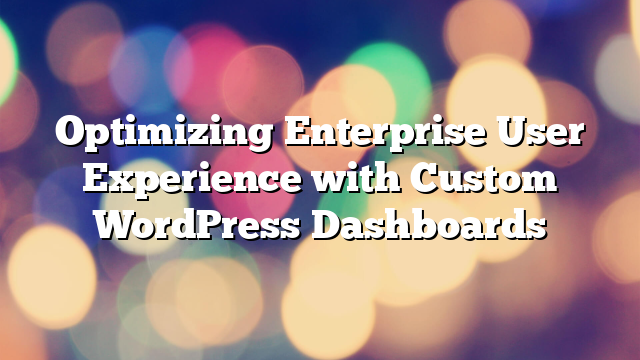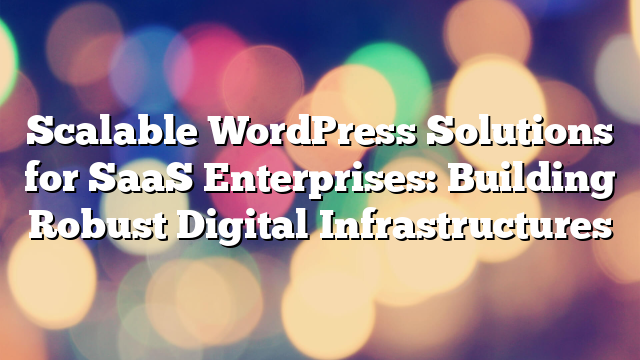Unlocking Multilingual Power: Building Enterprise WordPress Sites for Global Audiences
06.05.2025

As businesses expand beyond borders, catering to a global audience is no longer optional — it’s essential. Enterprise organizations require scalable, performant, and culturally adaptive websites to engage customers worldwide. WordPress, with its vast ecosystem and flexibility, can be the foundation for building a fully multilingual digital experience. In this article, we’ll explore how to effectively implement multilingual capabilities in enterprise-level WordPress sites, the tools that streamline the process, and why localization matters more than simple translation.
The Strategic Value of Multilingual WordPress
For enterprises targeting international markets, a multilingual website enhances accessibility, improves customer experience, and boosts search engine visibility in multiple regions. A well-localized site builds trust with users, reflects cultural sensitivity, and increases conversion rates by speaking directly to users in their native language.
WordPress, thanks to its open-source nature and vast plugin architecture, offers multiple paths for achieving this — from simple content translation to complex localization workflows integrated with enterprise systems.
Approaches to Multilingual Implementation in WordPress
There are generally two main strategies enterprises use to create multilingual WordPress sites:
1. Single-Site, Multi-Language Approach
This involves using plugins to manage and display content in multiple languages within a single WordPress installation. Tools like WPML or Polylang allow site admins to translate posts, pages, custom post types, taxonomies, menus, and widgets. These plugins also handle language switchers and SEO adjustments for each language version.
2. WordPress Multisite Network
For larger enterprises or those needing more granular regional control, WordPress Multisite is a better fit. Each site in the network can serve a specific language or region (e.g., fr.yoursite.com, de.yoursite.com), allowing separate design, content teams, and even plugin configurations per locale. This approach provides greater scalability and governance, especially when different departments manage content in different countries.
Localization: Beyond Translation
True localization involves adapting your site’s content, tone, imagery, and even functionality to suit the cultural expectations and preferences of each market. For example:
- Images may need to reflect local customs or fashion norms.
- Date/time formats and currency symbols should be relevant to the user’s region.
- Calls-to-action may need localized phrasing to resonate with users.
Enterprise websites should work with professional translation and localization providers, and integrate their workflows into the WordPress backend for efficiency.
Top Tools for Multilingual WordPress Sites
Here are some of the leading solutions to help you manage multilingual content in WordPress:
- WPML: A powerful plugin for managing translations, compatible with major themes and builders. Ideal for enterprises that need robust language handling and professional translation integrations.
- Polylang: A lightweight, flexible plugin for managing multilingual content, offering a user-friendly interface and compatibility with WordPress customizer.
- MultilingualPress: Built specifically for WordPress Multisite, it allows you to link separate sites and manage language relations across them, offering optimal performance and separation of concerns.
- Weglot: A SaaS-based solution that automatically translates your site and allows manual adjustments. Offers speed and simplicity for enterprises that want quick deployment.
Multilingual SEO: Ranking Across Regions
Multilingual sites require strategic SEO to ensure visibility across regions. Implementing proper hreflang tags, translated metadata, and region-specific sitemaps is key. Many plugins handle this automatically, but enterprise SEO strategies should be layered with regional search behavior analysis and local keyword research.
Enterprise Considerations: Workflow and Governance
Large-scale multilingual websites must consider governance policies and editorial workflows. Here are a few best practices:
- Role-based access: Ensure that local teams have the right permissions to manage content in their language without affecting others.
- Translation workflow: Integrate professional translation services (like SDL, DeepL, or Gengo) directly into your publishing pipeline.
- Performance optimization: Multilingual content increases database and asset size. Implement caching and CDN strategies tailored for international users.
Conclusion: Going Global with WordPress
A multilingual WordPress site is a powerful asset for any enterprise seeking to expand globally. By implementing the right architecture, embracing localization, and aligning with SEO and performance best practices, businesses can deliver tailored digital experiences to audiences in every corner of the world.
At Vipe Studio, we specialize in building and scaling multilingual enterprise WordPress websites. Whether you need a global multisite network or a fully localized single installation, our team can help you reach your international goals. Contact us today to discuss your multilingual project!



